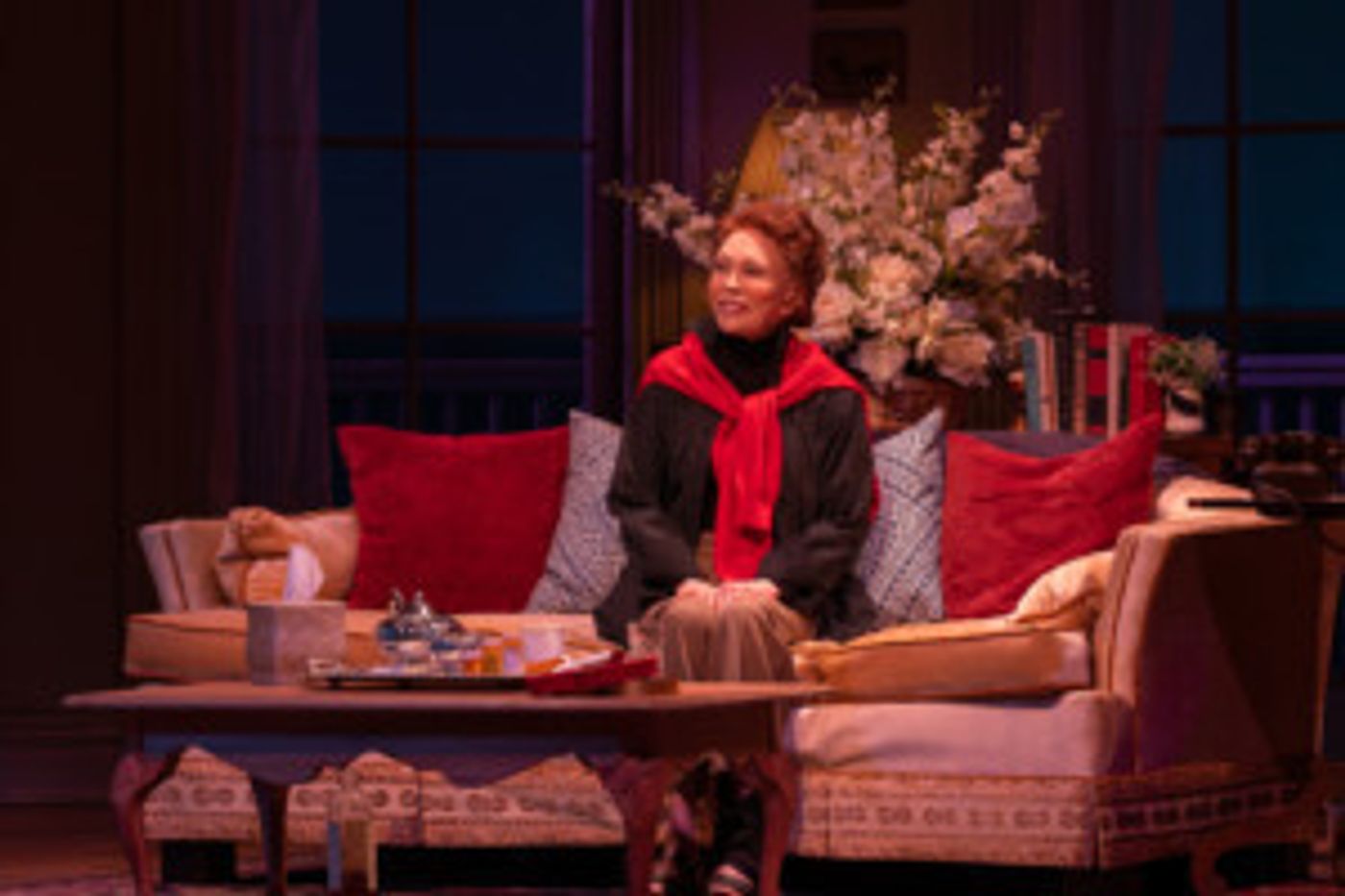Review: TEA AT FIVE: Light Repast

Tea at Five
Written by Matthew Lombardo, Directed by John Tillinger; Scenic Design, Scott Pask; Costume Design, Jane Greenwood; Lighting Design, Kevin Adams; Sound Design, John Gromada; Wig and Hair Design, Tom Watson; Production Stage Manager, Bess Marie Glorioso; Production Management, Juniper Street Productions; General Management (Boston), Lost In Boston Management; General Management, RCI Theatricals
CAST: Faye Dunaway as Katharine Hepburn
Performances extended through July 14 at Huntington Avenue Theatre, 264 Huntington Avenue, Boston, MA; Box Office:617-933-8600 or www.bostontheatrescene.com
Tea at Five, a one-woman play written by Matthew Lombardo in 2002, is based on Katharine Hepburn's book "Me: Stories of My Life." The original iteration of the play had two acts, the first covering her early career in 1938, and the second set in 1983 when she was convalescing from a car accident and reflecting on her life. Apparently written with her in mind for the part, it starred Kate Mulgrew and had a successful run at Hartford Stage, where it originated, and has been produced at numerous regional theaters, including the American Repertory Theater in Cambridge. Citing the audience response to Act II, Lombardo decided to revisit the play and write a 90-minute version of Hepburn at age 76 as a vehicle for Academy Award-winner Faye Dunaway, now receiving a pre-Broadway premiere at the Huntington Avenue Theatre in Boston.
The curtain rises on the living area of Hepburn's Fenwick estate in Old Saybrook, Connecticut, with the actress ensconced on the sofa with her broken ankle elevated and a tray of refreshments and prescription bottles on the coffee table in front of her. Three-time Tony Award-winning scenic designer Scott Pask gives the room an aura of comfortable elegance and enough windows to provide a noteworthy view of the shoreline and Long Island Sound. As it is just before 5 pm, the sky boasts a warm, apricot hue which lighting designer Kevin Adams manages to reflect onto the walls in the room. As dusk falls, the colors outside the window darken to a mix of pink and blue, gradually becoming all dark blue, and the interior fixtures brighten to light the February night. Costume designer Jane Greenwood evokes Hepburn's style by dressing Dunaway in tailored slacks and blouse with a sweater wrapped casually around her shoulders, and a wig by designer Tom Watson suggests the no-bother coiffure of her elder years.
Unfortunately, the setting, the clothing, and the hair are not sufficiently crafty to achieve the ultimate goal of this production of Tea at Five, which is to make us believe that we are in the room with Katharine Hepburn and to be engaged with her story. While Dunaway shows flashes of her considerable acting talent and stage experience, she is unable to sustain an emotive flow because she repeatedly stumbles on her words, taking herself out of the character and dragging us with her. Any solo vehicle carries with it some steep challenges as the actor has no scene partner to play off and has to rely solely on her own faculties to make it feel like a monologue, not a lecture, and Lombardo's script skews heavily toward telling rather than showing. He tosses an occasional lifeline when a few phone calls introduce unseen others, but they tend to feel like interruptions, rather than contributing anything of substance to the narrative.
Perhaps owing to the fact of Hepburn's ankle injury, Dunaway spends most of her time on the sofa, although Director John Tillinger has blocked limited movement around the set for her. Early on, when the doorbell rings, she rises and limps to the door using a cane. After taking delivery of a giant basket of flowers which requires both hands to carry, she abandons the cane and returns to the room. She never goes back for the cane and the limp never reappears for the remainder of the play. The director has Dunaway stroll to the window, and over to another chair next to the fireplace, and back to the sofa, but no more limp. As a matter of fact, she even marches back and forth with her knees up high during one of the reminiscences she shares about her youth.
The stories about Hepburn's Yankee upbringing, the highs and lows of her Hollywood career, and her handful of forays on the Broadway stage are interesting, but not terribly revealing. Lombardo goes into greater depth when she talks about her beloved older brother's suicide, as well as her 27-year love affair with actor Spencer Tracy. Dunaway finally has solid material to sink her teeth into in these two segments, but it feels as though she is holding something in reserve, being cautious in her approach, and fails to capture Hepburn's signature feistiness and spirited demeanor. Tea at Five attempts to bring us into the world of one legendary film star as portrayed by another Hollywood leading lady of renown. Lombardo presents a select view into Hepburn's life in approximately 70 minutes, but misses the opportunity to enlarge her presence. She was so much bigger and better on the screen.
Photo credit: Nile Scott Studios (Faye Dunaway)
Reader Reviews
Videos

